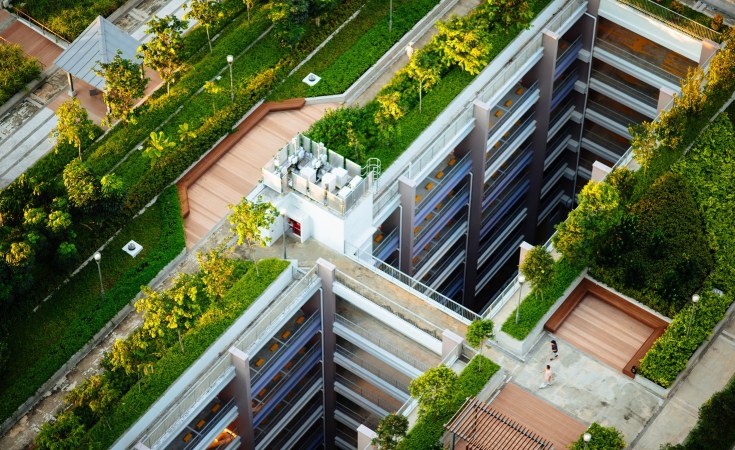Cape Town — The climate crisis is no longer a future concern. It has already begun. Extreme heat is threatening millions of people around the globe. It is bringing death, the destruction of infrastructure, and worsening food insecurity.
The UN Environment Programme (UNEP) has said that the world's rapidly growing urban centres should adopt cooling technologies that are cleaner, in order to limit greenhouse gas emissions and strengthen the resilience of communities.
A new report, Beating the Heat: A Sustainable Cooling Handbook, prepared with Rocky Mountain Institute an non-profit working on energy sustainability, says that warming in cities is likely to hit 4 degrees celsius if the current emission of greenhouse gas continues at high levels.
The risk of extreme heat is a rising threat to urban cities around the world and more especially to people in developing countries who are bearing the brunt of the impacts, as they have fewer resources with which to cope. The problem is particularly common in cities with high populations and dense infrastructure, where heat traps can easily form.
Cities that are overheated face climate change costs twice as high as those in the rest of the world, because of the urban heat island effect. Higher temperatures can lead to greater energy use for cooling, increased air pollution, worsening water quality and loss in worker productivity. The report says that hotter cities will have negative impacts on public health, the environment, energy systems, and economic activities.
The handbook also warned that diminishing green cover, the use of heat-trapping building materials, unsustainable waste management and poor planning has escalated carbon emission in cities.
The UNEP's handbook has been published amid the ongoing #COP26 summit, taking place in Glasgow, Scotland, which outlines solutions to the issue of hotter cities - solutions that have already been put into practice around the world.
The handbook cites some solutions in helping cool the air. Among the solutions is ensuring planning requirements in cities include a minimum area and distribution of green or blue spaces such as public parks or water bodies, increased ventilation and waste heat management, planting trees in public spaces, defining cool surfaces that reduce heat absorption, and using buildings to add shade to key public areas.
The handbook calls for the adoption of air conditioning practices that emit less carbon into the atmosphere.
Some African countries have started implementing solutions. In South Africa for example, authorities are counting on tree planting to act as a protected carbon sink, that will further drop emissions accelerating climate change. Trees are described as sinks within the carbon cycle that absorb, accumulate and sequester carbon dioxide from the atmosphere.
The City of Durban in South Africa is using tree giveaways to advance social and economic upliftment goals. The municipal government provides residents with seedlings or young trees and pays residents to care for them in areas with high heat or storm water management risks. Residents form small nurseries and provide maintenance services for trees in their community. The programme has brought cost savings to the municipal budget, improvements in tree health and survival, and new economic opportunities for under-resourced communities.
South Africa has gone a step further with its roll out of cool roofing, aimed at providing low-tech, but energy-efficient passive cooling solutions to communities.
Cool roofs are a simple concept. Lightening the colour of a roof allows more solar energy to be deflected, rather than converted into heat. One of the common solutions is to apply a light-coloured coating to an existing roof. Cool roofs can reduce indoor air temperatures.
A pilot project has been underway in the Northern Cape province, in the town of !Kheis, to coat roofs and walls of homes, schools and municipal buildings in the town with cool coating. It not only improved the comfort of homes but created several new businesses to mix and install cool roof coatings. The pilot has grown to over 500 buildings locally and is now used as a model for funding cool roofs in other South African cities. A town of 10,000 people is bringing meaningful change to a country of 57 million people.
Additional pilots are underway in Bangladesh, Côte d'Ivoire, Indonesia, Kenya, Mexico, Niger, the Philippines, Rwanda, Senegal and South Africa via the Million Cool Roofs Challenge, with the goal of each project deploying 1 million square metres of cool roofs by August 2021. Other benefits of cool roofs include its energy saving potential, cost savings potential, improved roof and equipment life, and a short payback period. (In some buildings, cool roofs can require more winter-time heating, but energy savings in the summer are usually greater than energy increases in the winter.)
As the world warms, rapidly scaling up cooling solutions like solar-reflective cool roofs in countries exposed to heat stress and lacking widespread access to cooling services is essential. Studies show that in buildings without air conditioning, replacing a dark roof with a white cool roof can reduce interior temperatures by two to three degrees Celsius and net annual energy use by up to 20%.


